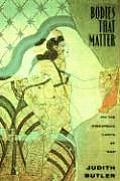The body is
intriguing because it is material and it isn’t. It appears to be us, but only in
part. People have distinguished between body and mind ever since the times of Plato if not earlier. The split is convincing, even tempting, because there are huge conflicts
between our urges and our rational, disciplined self. We could divide them
neatly: the urges belong with the body
and the rational self with the mind. But things are never that tidy. For
instance: so much is going on in the brain, commands, actions and reactions as
it absorbs messages, makes assumptions and adjusts and adapts and alters, making
the world a comprehensive place and fitting us into it as much as possible, it doesn't seem physical.
And yet, as any
brain surgeon will testify, the brain is a part of the body. With its cerebral processes, it also has a
concept of the body, influenced by all the messages it has ever absorbed and
assimilated, accepted and resisted.
It is not
easy to live with our bodies, because the concept of the body in closely weaved
into it. Women, for instance, strive to be attractive, because otherwise, the
media tells us, we become invisible. We also struggle to appear young, as most famous,
aging women, our role models, set an example when they go through plastic
surgeries and look eternally fresh. Else, we need to seem strong since the
women who are not attractive or young, and/or those who want to make a
difference, have to be steeled to face a world of preconceived feminine characteristics.
Beyond that, even fun and pleasure suffer. Our sexuality needs to be of a
certain kind, repressed into a mold that is hard to change.
When I went
through preemptive surgeries to prevent ovarian and breast cancer, I became
aware of the contradictory feelings related to the body: guilt and shame,
pleasure and pain, and changing body image. Things were set in motion as I started
thinking about them. I went on and wrote an MA thesis about the female body in
literature written by women.
I admire
the action of brave women who expose their body with its mastectomy scars, like
Tig Notaro or stand naked in performances like
Amanda Palmer to live their vulnerability and seek provocation and change. We
read about them because they are the exception, which is a shame. The times are a changing as Bob Dylan says since 1964
in this great song, but maybe they don't change enough. However, change is constant, and the body is never
dull.




